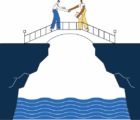 Every November, our new CAS Board of Directors begins its term with a brainstorming session to identify the most important strategic initiatives for the coming year. This exercise results in a long list of ideas for potential areas of focus, which we then whittle down to a manageable handful through online surveys of the board. Based on that process, the board has identified the following six strategic initiatives for 2019: 1) predictive analytics; 2) The CAS Institute; 3) Strategic alliances; 4) CAS Education Task Force; 5) Volunteer/staff model; and 6) Diversity and inclusion. I touched on these at the Spring Meeting’s Business Session in New Orleans. Following is a little more about the work we are doing on each initiative.
Every November, our new CAS Board of Directors begins its term with a brainstorming session to identify the most important strategic initiatives for the coming year. This exercise results in a long list of ideas for potential areas of focus, which we then whittle down to a manageable handful through online surveys of the board. Based on that process, the board has identified the following six strategic initiatives for 2019: 1) predictive analytics; 2) The CAS Institute; 3) Strategic alliances; 4) CAS Education Task Force; 5) Volunteer/staff model; and 6) Diversity and inclusion. I touched on these at the Spring Meeting’s Business Session in New Orleans. Following is a little more about the work we are doing on each initiative.
Predictive Analytics
The board is thinking strategically about how best we can prepare actuaries to add value in this area. The CAS recently added significant predictive analytics material to its syllabus. This material is largely on new exams MAS I and MAS II. This will ensure that all new Associates have been exposed to and are tested on predictive analytics. For existing Fellows, we continue to offer sessions at all major CAS meetings and seminars on the use of predictive analytics. There were a variety of sessions offered in New Orleans. In addition, we are co-sponsoring programs like the Joint Predictive Analytics Seminar, which was held in Toronto this past February.
To build upon these efforts, the board formed a working group to help ensure that we will meet the needs of our members and employers in the future for this fast-growing practice area.
The CAS Institute
The CAS Institute, or iCAS for short, was created as a CAS subsidiary to bridge the gap between actuaries and data scientists in insurance companies. The iCAS now has over 400 members and offers three different credentials, the first of which is the Certified Specialist in Predictive Analytics (CSPA). The iCAS has already awarded over 200 CSPAs, with more candidates in the pipeline. This year, the iCAS expanded beyond predictive analytics and is now offering two new credentials in catastrophe risk management:
- Certified Catastrophe Risk Specialist, which represents a working knowledge of catastrophe risk management.
- Certified Catastrophe Risk Management Professional, which represents an advanced application of catastrophe risk management.
Both new credentials are offered in partnership with the International Society of Catastrophe Managers.
Strategic Alliances
The board created a task force to look at potential strategic partnerships with other organizations. This task force has provided two reports to the board this year. The task force has articulated a set of criteria for identifying potential strategic partners. Once potential partners are identified, the task force has developed a set of criteria for evaluating the fit for a strategic alliance. We already have several examples of strong partnerships that have evolved over the years, including The iCAS with the International Society of Catastrophe Managers; University Engagement with Gamma Iota Sigma, the International Association of Black Actuaries (IABA) and the Organization of Latino Actuaries (OLA); and the CAS Board of Directors with The Institutes, whose chief executive, Pete Miller, serves on the CAS Board.
This “manageable handful” of strategic initiatives for 2019 and beyond illustrate how we are continually striving to improve our association and our profession.
The criteria developed by our task force will allow us to be more intentional about forging these kinds of mutually beneficial relationships in the future.
Though not a strategic alliance, as discussed in my last President’s Message, we continue to look at ways we can collaborate with the Society of Actuaries where we would benefit by working together.
CAS Education Task Force
The CAS Board established a task force to look broadly at our current examination and credentialing process, and to make recommendations. This initiative is a topic of ongoing interest to all of our stakeholders — members, candidates, employers of actuaries and other users of our services. The task force is reviewing the following:
- Content — Is the present CAS style of questioning on examinations the most effective way to accomplish the objectives of its education process? Does the content examined adequately prepare candidates for the job market? Are there gaps or redundancies on the syllabus?
- Experience — Would alternatives to examinations such as online learning modules or project-based experiences be more effective ways to accomplish educational objectives?
- Access — Do the costs, locations and timing of the examinations present barriers to entry for all or certain candidates, particularly early in the credentialing journey?
Volunteer/Staff Model
As the CAS continues to grow, the current largely volunteer-centric model is under increasing pressures. A board task force is looking at how we can evolve our volunteer/staff model to utilize staff resources, while making the best use of volunteers. We are expecting to benefit in a number of ways through any restructuring. For example, we should be able to identify opportunities to increase speed-to-market by using paid staff instead of volunteers. We can also improve committee accountability and efficiency.
There is more work we need to do to get there, such as pinpointing which specific committees should be more staff-driven versus volunteer-driven. So, we will continue with completing evaluations focused on committee goals and CAS staff capabilities.
Diversity and Inclusion
Diversity is a great example of a goal that may benefit from a different structure than our traditional volunteer-driven model. There is so much work to do to enhance our diversity and inclusion efforts — not just for the CAS, but for the actuarial profession as a whole — and we could benefit from engaging with professionals experienced in this area who do not come from an actuarial background. It is also an area where we will be working with organizations like IABA, OLA, and the Society of Actuaries to determine the best path forward for attracting and retaining black and Hispanic youth, parents and teachers.
Conclusion
This “manageable handful” of strategic initiatives for 2019 and beyond illustrate how we are continually striving to improve our association and our profession. We are now, and always have been, up to the challenge of change.











